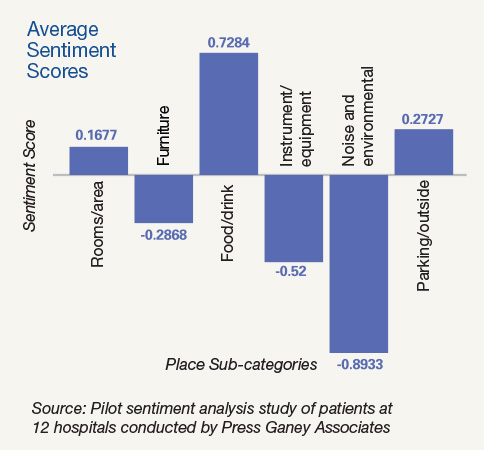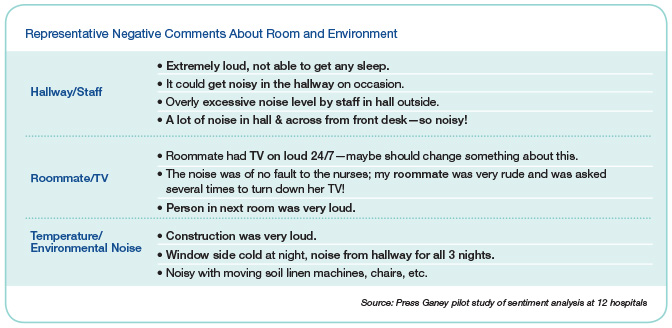Customers share a plethora of information about themselves with companies, both deliberately and unintentionally. This happens via support and point-of-sale interactions, surveys and other types of feedback mechanisms, social media discussions, text interactions, etc. Organizations can glean additional insights about customer attitudes and needs using sophisticated analytics tools, including speech, sentiment, and text analytics. Companies can then act on these insights to predict customers' future needs and tailor relevant product offers and service strategies. Still, companies don't make full use of all the customer information they have in their possession, including information about changing customer priorities and behaviors. "Most companies don't efficiently manage and consider their customer data as an asset," says Lale Dagli, manager at Peppers & Rogers Group.
Collecting the Right Customer Data
Listening to customers’ feedback is essential, but it’s just as important to filter out any customer information that isn’t relevant or meaningful. “There are costs associated with collecting too much customer data,” says Dagli.
Building on Insight
Creating a data strategy that leverages both strategic and tactical requirements is key for consistent customer management.
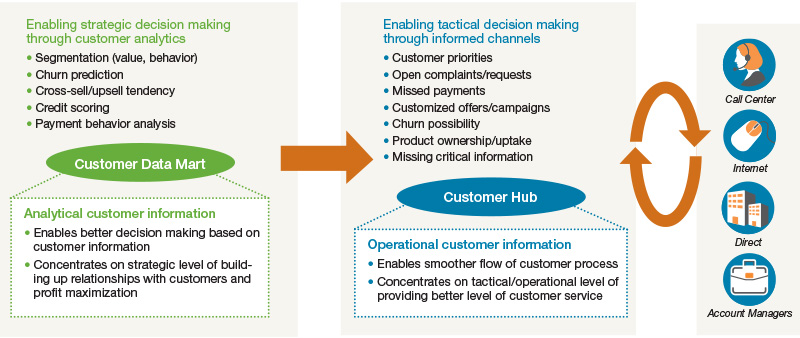
Knowing the Customer
Peppers & Rogers Group considers identification of the “right” customer data a critical requirement for maximizing ROI in data collection. Over-collection not only leads to an increasing burden for customers, channels, and IT systems, but also can lead to difficulty in decision making.
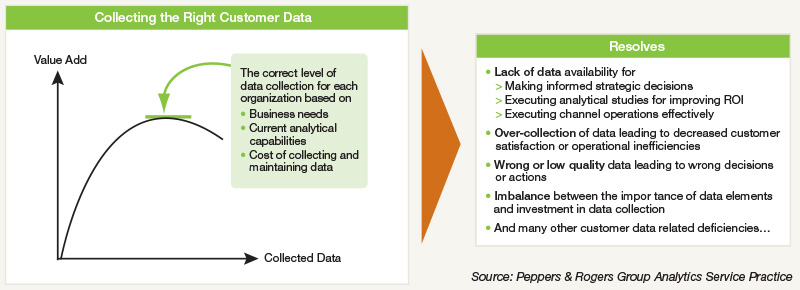
Developing a Unified View of Customer Insights
Although marketing professionals are often adept at planning and executing marketing campaigns in
individual channels, they continue to struggle with developing a unified view of customer interactions across channels that will enable them to extract valuable insights, according to a recent Forrester Consulting study titled "The New Campaign Management Mandate." Data silos and organizational fiefdoms make it challenging to achieve a holistic view of each customer, says Dagli. One effective way to support data integration and to encourage decisionmakers to share customer insights across channels is by establishing compensation and bonus structures that incent channel managers to
share customer data.
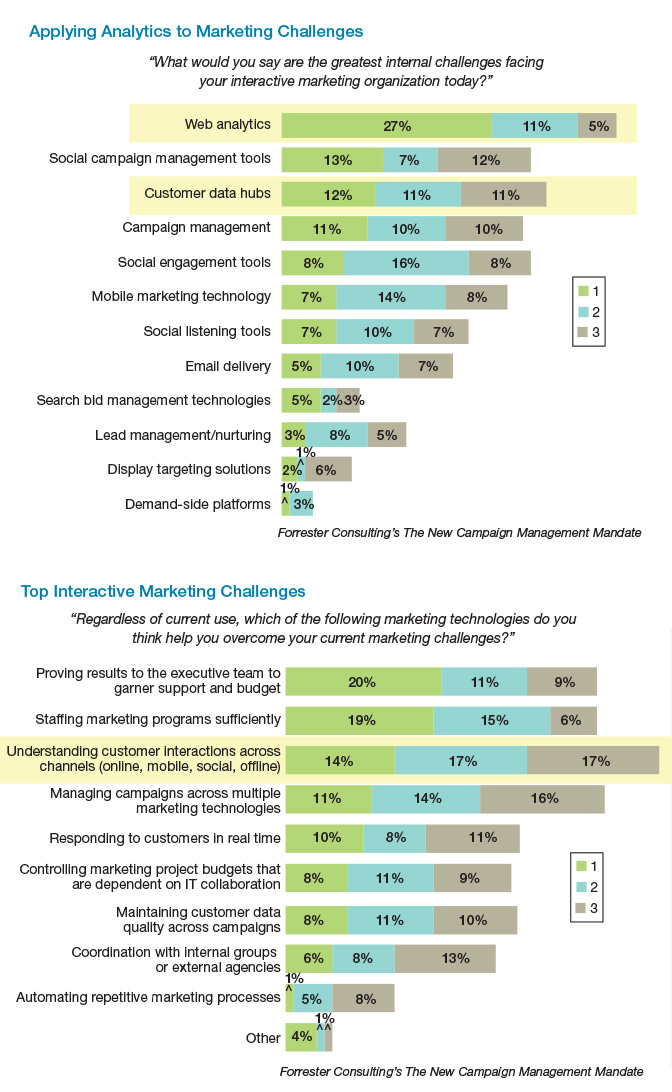
Deep Insight Fosters Informed Decisions
Armed with the right intelligence about customers—including recent purchases, customer needs, life stage (e.g., married with college-age children), preferences, etc.—companies can make more informed decisions for sales strategies, marketing campaigns, and customer support. More important, having the right information about customers in real time and acting on it quickly can help companies to create relevant, targeted offers that increase the likelihood of upsell and cross-sell conversion at the ideal moment of a customer interaction.
An Rx for Meeting Patient Preferences
Examining what customers say in surveys and in unsolicited feedback can help companies determine the elements of the customer experience that are important to customers.
In late 2010 Press Ganey Associates conducted a proof-of-concept study using text and sentiment analytics to discern patient preferences across 12 hospitals. The findings, which were published in Partners magazine, included relatively negative sentiment scores given to comments involving noise and environment, rooms, furniture, and parking, while the general categories of people (hospital staff) and processes generated mostly positive sentiments. One of the hospitals involved in the pilot was interested in exploring the root causes of poor mean scores in the "room" and "hospital environment"' section of its inpatient surveys. Further analysis revealed three main types of problems that could potentially be remedied to help improve the patient experience: hallway, roommate/TV, and environmental noise.
